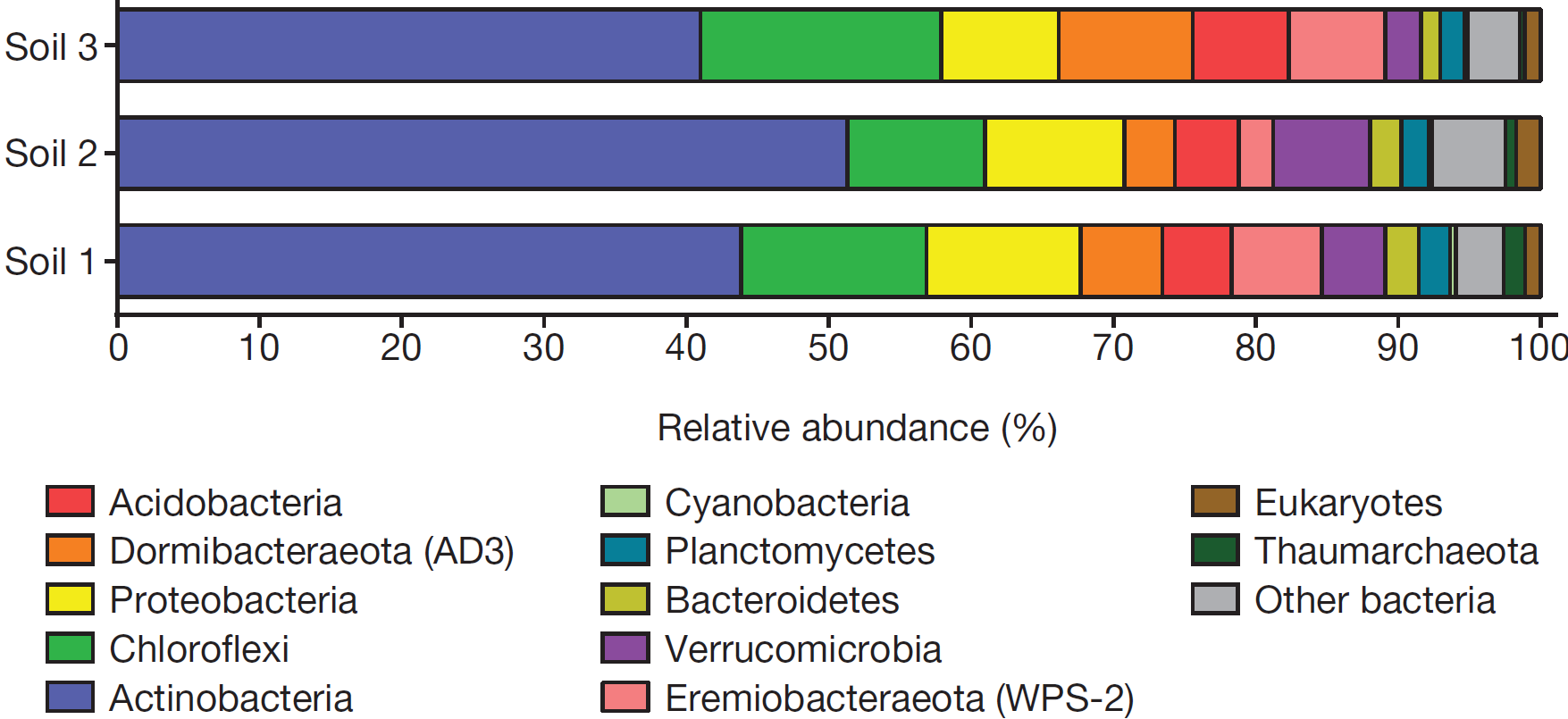 HOW DOES LIFE EXIST IN EXTREME ENVIRONMENTS?
HOW DOES LIFE EXIST IN EXTREME ENVIRONMENTS?
Our world is inhabited by a tremendous abundance and diversity of microorganisms. Even extreme environments, from Yellowstone to Antarctica, harbour rich microbial communities. This reflects that microbes are highly metabolically versatile: they can thrive even in environments deprived of the organic carbon and oxygen required for animal life. What’s more, microbes are capable of resisting environmental stresses and reducing energy expenditure by entering dormant states analogous to seeds.
We explore how microbes make energy and carbon in ecosystems worldwide. These insights enable us to address fundamental questions about community assembly, primary production, evolution, and astrobiology. Along the way, this research has taken us to plenty of interesting places: Antarctic soils, volcanic craters, and deep-sea seeps to name a few.
Major projects
1. Atmospheric trace gases: fuelling the dormant microbial majority (ARC DECRA Fellowship, 2017 – 2019)
2. Securing Antarctica’s Environmental Future (ARC Special Research Initiative, 2021 – 2027, Australian Antarctic Division Grant, 2019 – 2021)
3. Microbial communities: ideal systems to test macroecological theories and metrics (Holsworth Foundation, 2018 – 2020)
4. Energetic drivers of the antibiotics arm race (Centre to Impact AMR Project)
Research team
Staff: Dr Sean Bay (postdoc), Dr Rachael Lappan (postdoc), Dr Laura Perlaza-Jimenez (postdoc)
Students: Bob Leung (PhD), Sarah Reeve (PhD)
Collaborators: Prof Steven Chown, Prof Philip Hugenholtz, Dr Xiyang Dong, Prof Melodie McGeoch, Dr Sergio Morales, Dr Federico Baltar, Dr Anja Spang, Dr Jen Wood, Prof Paul Sunnucks, Dr Sasha Pavlova, A/Prof Osnat Gillor, A/Prof Dagmar Woebken, Prof Don Cowan, Dr James Bradley, Dr David Waite, Dr Jennifer Wood, Dr Sarahi Garcia
Previous findings
Metabolic flexibility enables microorganisms to survive in deprived or variable environments. Our seminal finding is that most soil bacteria are capable of ‘living on air’, i.e. they use atmospheric hydrogen and carbon monoxide as energy sources (Nature Microbiol 2021). This trait extends to phyla as diverse as Actinobacteria (PNAS 2014a, PNAS 2014b, ISME J 2019a), Acidobacteria (PNAS 2015), Verrucomicrobia (ISME 2017b), Chloroflexi (ISME J 2019b), and Proteobacteria (ISME J 2020). Such atmospheric energy sources support primary production in oligotrophic ecosystems, providing an alternative basis for ecosystem function to solar or geological energy (Nature 2017, bioRxiv 2021).

Figure: Microbial community structure of three desert soils from Eastern Antarctica. We showed these diverse communities have a low capacity for photosynthesis and are instead primarily supported by atmospheric trace gases as energy and carbon sources (Nature 2017).
Our work has also uncovered how interactions of fermentative and respiratory bacteria underlie the function of diverse sediments (Nature Geoscience 2017, ISME J 2018, Nature Microbiol 2019a, Nature Comms 2020) and the process of eukaryogenesis (Nature Microbiol 2019b). We have also contributed to the development of ecological metrics and theory (mSystems 2020, ISME J 2021).